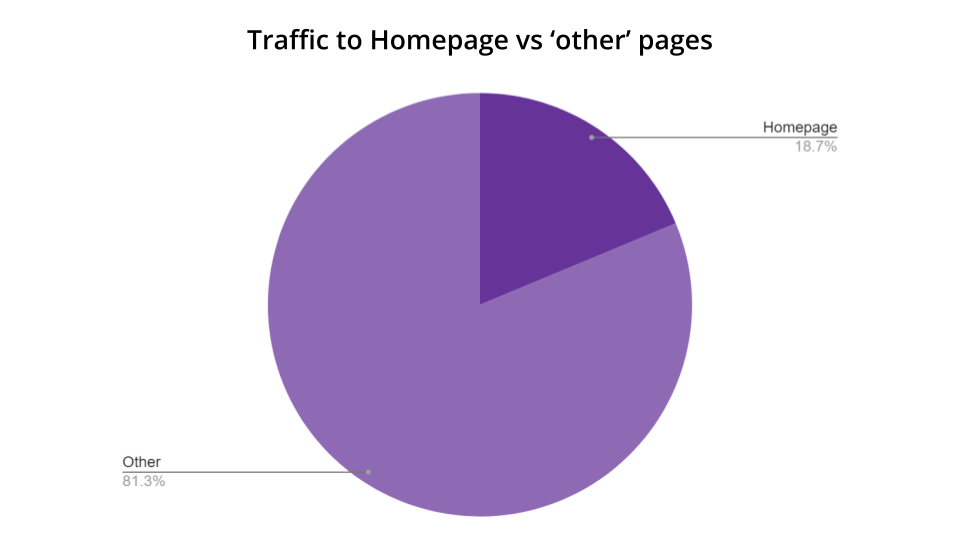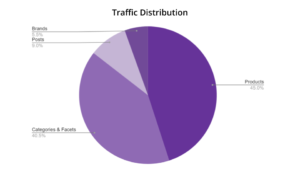How to Benchmark Your Traffic Segments
7 March 2022 Blog Posts
Traffic segmenting refers to separating the different types of traffic that a site receives. We can then use this to understand where is the best place for traffic to land on a website.
We have analysed data from our Top 20 clients to discover where it is best for your customers to land on your eCommerce site for the most conversions.
Contents
- How much traffic is landing on your homepage?
- Do you know where your website traffic is going?
- What categories are your visitors being directed to?
How much website traffic is landing on your homepage?
At Megantic we’ve analysed data from our Top 20 clients (measured by monthly organic traffic) and less than 20% of their traffic (visitors) are landing on the homepage.

I bet you’re asking so what, is this good or bad?
We find that most of the homepage traffic is from people searching for your brand (i.e. branded traffic). This is great as it demonstrates that you have strong brand awareness, presence and recall. However, too much traffic landing on your homepage means less traffic going to other pages on your website and we know that conversion rates drop with every click.
At Megantic we are big advocates of a full market strategy which means ensuring you maximise your traffic with both branded and importantly, non-branded traffic to your website.
For our eCommerce clients we aim to ensure they are maximising their sales opportunities by landing their visitors on pages you can buy from. We call these selling pages.
Do you know where your website traffic is going?
Through our eCommerce lens and experience in technical SEO for eCommerce this is important, but begs the question: Where is the other 80% of traffic going?
We categorise traffic into the following:
- Category & Facet* pages
- Product pages
- Brands pages
- Posts
* Faceted navigation is comprised of multiple filters.
This is similar to Semrush’s search intent categories.
TRANSACTIONAL: The user wants to complete a transaction (conversion).
INFORMATIONAL: The user wants to find an answer to a specific question.
NAVIGATIONAL: The user wants to find a specific page or site.
COMMERCIAL: The user wants to investigate brands or services.
Data from our Top 20 clients (measured by monthly organic traffic) sees an average 45% is going to product pages (transactional), 40.5% is going to category pages (transactional) with less than 10% going to posts (informational) and 5.5% to brands (commercial/ informational).

What categories are your visitors being directed to?
Whilst there are a number of factors to consider such as how competitive your industry is, at Megantic we have seen better revenue growth for clients that are driving more of their organic traffic to category and product (selling) pages.
If you would like to learn more about where your visitors are being directed to please get in touch with us for a free website audit & strategy session.





